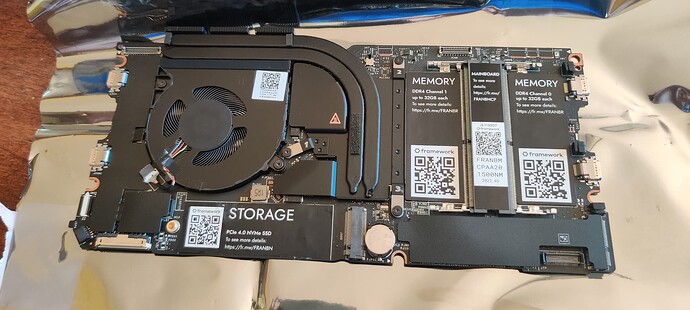So a partial update of my work so far:
Mainboard received with BIOS 3.07 installed. Flash to 3.10, initial setup, etc complete done using USB BIOS flash while following Getting started guide with a bare motherboard
Did some initial power testing, out of the box with arch linux installed:
- Draw is <0.5W when off
- ~4-5W idle at graphical desktop
- about ~40W max in stress test operations
Above numbers are including the power use of an nvm.e SSD, 2 sticks of RAM, a 3rd party USB hub with HDMI out, but no wifi card intalled yet. Started seeing voltage sag down to ~19.3V with an 87W USB-PD power supply, so I am really not interested in trying to push to 60W turbo.
Check combinations of RAM sticks, my 4GB stick can go to 3200MT/s, the 8GB tops out at 2133MT/s, and both together are limited by the slow at 2133MT/s. CL22 timings for each config. Plenty fast for a router, AP, NAS, etc.
I did confirm that AX210 is capable of ap mode on both 2.4GHz and 5GHz. I was using kernels 5.15 and 6.02 with iwlwifi module and intel-ucode 20220809-1 for testing. From my research, it appears that AX210 is still unable to ap mode on 6GHz due to Intel’s overly strict interpretation of regulations and locking it in their binary blob. If someone knows of a way around this, please let me know.
So I went searching for a better wifi card for ap mode on 6GHz. There is the Qualcomm QCN9074 and 9024, and possibly one other model, but as far as I can tell those are single band on 6GHz only, and USD$100-$200 each. Looks like the best candidates were from Mediatek, specifically:
- MT7921K, the pcie variant, used in AMD RZ608 and clones using m.2 a+e key form factor, or
- MT7921AU, the USB variant, or
- MT7922A, pcie, used in AMD RZ616
More details here: MediaTek - WikiDevi.Wi-Cat.RU
The former was significantly cheaper (~USD$19), so I ordered it, and it is on the way. If what I am reading about the mt76 kernel driver is correct, it should support AP mode on all three bands. Testing to confirm soon.
Oh and I ordered a USB-C powered ethernet switch from Cable Matters (model 201069, USD$29). It is here, has a Realtek Semiconductor Corp. RTL8153 chip in it, and seems to be supported by adding the r8152-dkms AUR package. I found some reports about it freezing up the entire LAN if the computer it is attached to goes de-powered, possibly even after a reboot, so it will be interesting to see how that turns out.
This project has definitely moved up my priority list as my R7000P has decided to completely stop making an AP on 5GHz, despite all my old tricks to getting it fully factory reset. Hopefully I can have my DIY 6E AP up soon instead.
Next to do items:
Update BIOS to 3.10- 3D print case
Start network operations, nic bridging, etc testing




